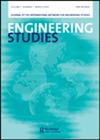Design Thinking as a Complement to Human Factors Engineering for Enhancing Medical Device Usability
IF 1.3
3区 工程技术
Q2 EDUCATION, SCIENTIFIC DISCIPLINES
引用次数: 5
Abstract
ABSTRACT Medical devices are indispensable in the diagnosis, treatment and management of disease. To enhance the usability of medical devices, human factors engineering (HFE) has been widely applied. While it takes into account human capabilities and limitations, the use of HFE in the design of medical devices has challenges that render its implementation incomplete, resulting in its potential not being fully exploited. This study examines the literature on HFE to identify gaps and review recommendations with regard to its application in the design of medical devices. The literature reveals that HFE tends to place emphasis on the reduction of errors at the expense of medical device usability, that it has challenges in drawing on multiple perspectives, that it provides limited space for creativity and innovation, that it does not give adequate attention to contextual factors, and that communication barriers interfere with its implementation. The literature suggests that the shortcomings of HFE are methodological. To fill the gap, we propose the use of design thinking in HFE, not as a substitute but as a complementary approach, for enhancing usability. Design thinking, by virtue of being a human-centered approach, has the potential to add value to HFE by incorporating the subjective components of usability.设计思维与人因工程互补提高医疗器械可用性
摘要医疗器械在疾病的诊断、治疗和管理中是必不可少的。为了提高医疗器械的可用性,人因工程(HFE)得到了广泛的应用。虽然它考虑到了人类的能力和局限性,但在医疗器械设计中使用人因工程存在挑战,导致其实施不完整,导致其潜力没有得到充分利用。本研究审查了HFE的文献,以确定其在医疗器械设计中的应用方面的差距并审查建议。文献表明,人因工程倾向于以牺牲医疗设备可用性为代价来强调减少错误,它在从多个角度出发方面存在挑战,它为创造力和创新提供了有限的空间,它没有充分关注上下文因素,沟通障碍干扰了它的实施。文献表明,人因工程的缺点是方法论的。为了填补这一空白,我们建议在人因工程中使用设计思维,而不是作为替代,而是作为一种补充方法,以提高可用性。设计思维是一种以人为中心的方法,通过结合可用性的主观组成部分,有可能为人因工程增加价值。
本文章由计算机程序翻译,如有差异,请以英文原文为准。
求助全文
约1分钟内获得全文
求助全文
来源期刊

Engineering Studies
ENGINEERING, MULTIDISCIPLINARY-HISTORY & PHILOSOPHY OF SCIENCE
CiteScore
3.60
自引率
17.60%
发文量
12
审稿时长
>12 weeks
期刊介绍:
Engineering Studies is an interdisciplinary, international journal devoted to the scholarly study of engineers and engineering. Its mission is threefold:
1. to advance critical analysis in historical, social, cultural, political, philosophical, rhetorical, and organizational studies of engineers and engineering;
2. to help build and serve diverse communities of researchers interested in engineering studies;
3. to link scholarly work in engineering studies with broader discussions and debates about engineering education, research, practice, policy, and representation.
The editors of Engineering Studies are interested in papers that consider the following questions:
• How does this paper enhance critical understanding of engineers or engineering?
• What are the relationships among the technical and nontechnical dimensions of engineering practices, and how do these relationships change over time and from place to place?
 求助内容:
求助内容: 应助结果提醒方式:
应助结果提醒方式:


